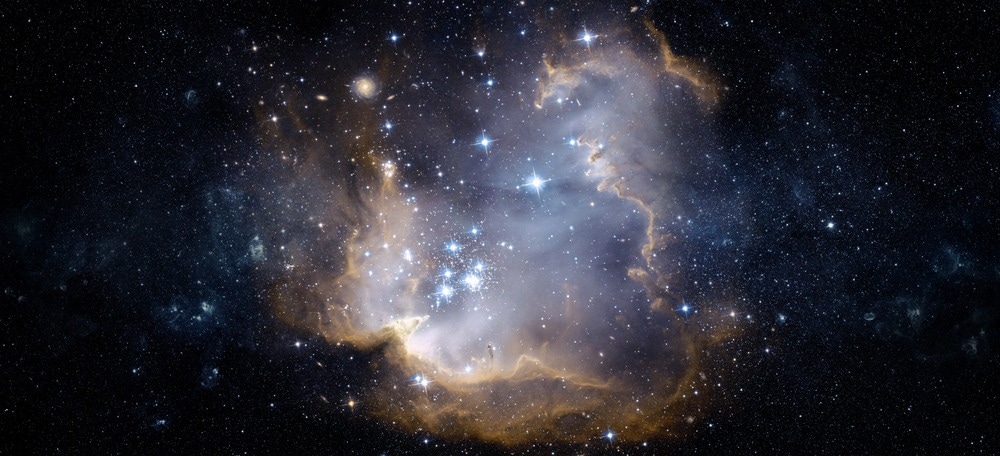Scientists at Southwest Research Institute have found water molecules on the surface of an asteroid for the first time, using data from the decommissioned Stratospheric Observatory for Infrared Astronomy (SOFIA), a collaborative project of NASA and the German Space Agency at DLR.

Image Credit: Triff/Shutterstock.com
Using the FORCAST instrument, researchers examined four silicate-rich asteroids to identify the mid-infrared spectral fingerprints that are indicative of molecular water on two of them.
Asteroids are leftovers from the planetary formation process, so their compositions vary depending on where they formed in the solar nebula, of particular interest is the distribution of water on asteroids, because that can shed light on how water was delivered to Earth.
Dr. Anicia Arredondo, Study Lead Author, Southwest Research Institute
While icy materials agglomerate farther away, anhydrous, or dry, silicate asteroids develop near the Sun. The distribution and evolution of components in the solar nebula since formation can be inferred from the location and composition of asteroids.
Since water is essential to all life on Earth, the distribution of water in the solar system will shed light on the distribution of water in other solar systems and will determine where to search for possible life, both within and outside of the solar system.
We detected a feature that is unambiguously attributed to molecular water on the asteroids Iris and Massalia and we based our research on the success of the team that found molecular water on the sunlit surface of the Moon. We thought we could use SOFIA to find this spectral signature on other bodies.
Dr. Anicia Arredondo, Study Lead Author, Southwest Research Institute
In one of the biggest craters in the southern hemisphere of the Moon, SOFIA found water molecules. Prior studies on the Moon and asteroids had found some hydrogen, but they were unable to differentiate between water and its near chemical sibling, hydroxyl.
The equivalent of a 12-ounce bottle of water was found by scientists to be chemically bonded with minerals and trapped in a cubic meter of dirt that was scattered throughout the lunar surface.
Based on the band strength of the spectral features, the abundance of water on the asteroid is consistent with that of the sunlit Moon, similarly, on asteroids, water can also be bound to minerals as well as adsorbed to silicate and trapped or dissolved in silicate impact glass.
Dr. Anicia Arredondo, Study Lead Author, Southwest Research Institute
Parthenope and Melpomene, two fainter asteroids, had data that were too noisy to make a firm determination. It appears that the FORCAST instrument lacks the sensitivity necessary to identify the presence of the water spectral characteristic.
But in light of these discoveries, the team is enlisting NASA's James Webb Space Observatory, the world's best infrared space observatory, to help them explore more targets with its superior signal-to-noise ratio and accurate optics.
Arredondo concluded, “We have conducted initial measurements for another two asteroids with Webb during cycle two, and we have another proposal in for the next cycle to look at another 30 targets. These studies will increase our understanding of the distribution of water in the solar system.”
Journal Reference
Arredondo, A., et.al. (2024). Detection of Molecular H2O on Nominally Anhydrous Asteroids. Planetary Science. doi.org/10.3847/PSJ/ad18b8.